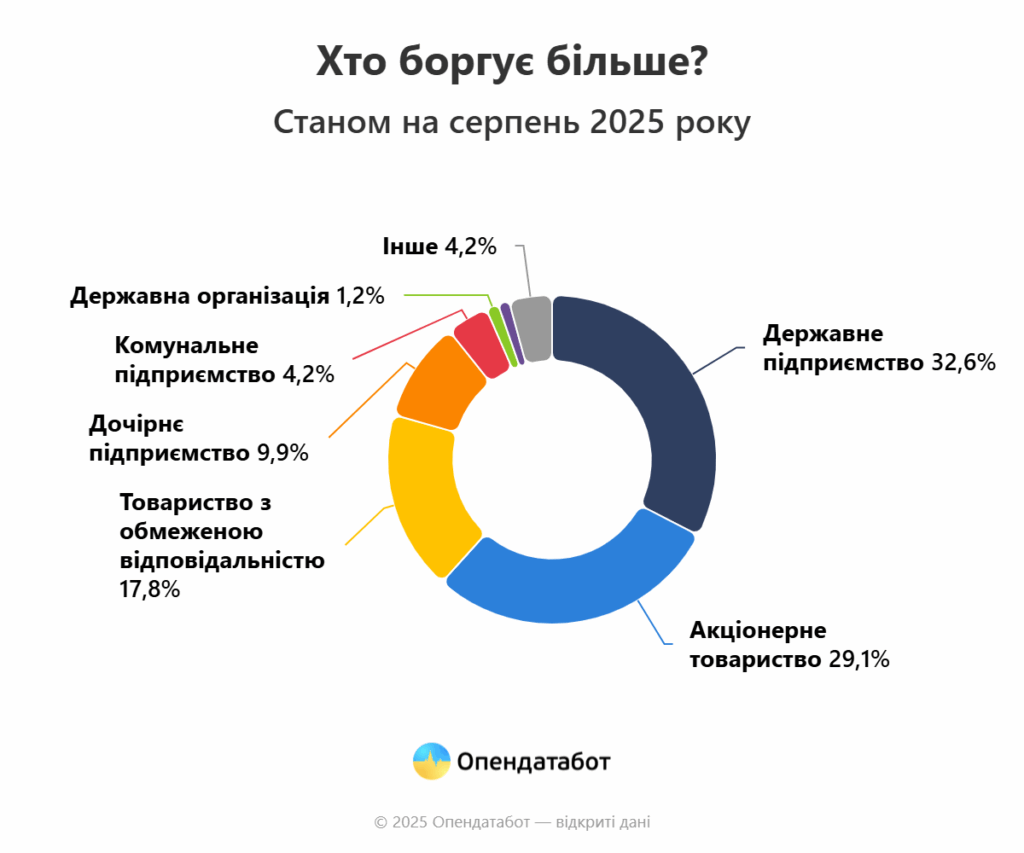West without debts, East with problems: geography of salary delays in Ukraine
18 August 17:07 INFOGRAPHICS
INFOGRAPHICS
More than 35 thousand wage arrears were recorded in Ukraine as of August 2025. This is reported by "Komersant Ukrainian" with reference to the Opendatabot platform.
We are talking about 35,471 proceedings on wage arrears. This is 11% more than at the end of 2021.
Where wages are most often delayed in 2025
The largest number of wage arrears was recorded in Sumy region. According to Opendatabot, 6305 companies in this region have not paid their employees, which is significantly higher than in other regions.
In addition to Sumy region, high volumes of wage delays were recorded in the capital of Ukraine (3784 cases) and in Kharkiv region (2189). These regions traditionally have a strong industrial base, which affects the scale of arrears. After all, companies operate in the face of energy problems, limited exports, and rising costs.
Poltava region (1203 cases), Odesa region (1116), and Kyiv region (1152) demonstrate an average level of arrears. This indicates the relative stability of large regional labor markets, where businesses are trying to keep up the pace of work even despite the war risks.
There are almost no salary delays in Chernivtsi region (54 cases), Vinnytsia region (274), and Zakarpattia region (315). According to experts, the reason for the stability of the regions is the large share of small and medium-sized businesses, which adapt to changes faster and manage financial flows more flexibly.
The map of arrears demonstrates a clear gap between regions: from minimal delays in the west of the country to critical indicators in the east and center, emphasizing both economic imbalances and regional specifics of the labor market.

Who owes the most wages to Ukrainians
According to Opendatabot, state-owned enterprises remain the largest wage debtors in Ukraine . They account for more than a third of all debts – 32.6% (11,562 proceedings). The reason for this is systemic problems in the management and finances of state-owned companies, which, despite budget support, remain the main debtors to their employees.
Joint-stock companies are the second largest debtors. Their share is 29.1% (10308 proceedings) of the total amount of debts. Among them are many companies in strategic industries, including industrial and energy.
At the same time, limited liability companies also account for a significant share of debts – 17.8% (6298 proceedings) – which confirms that problems with salary payments are relevant for both the public sector and business.
Subsidiaries owe 9.9% (3,499 proceedings) of all delayed wages, while municipal enterprises account for 4.2% (1,484 proceedings). This is a relatively smaller share, but it has a direct impact on the social sphere, as it concerns educational, healthcare, and utility services.
The smallest share of debts is owed by government organizations (only 1.2% ) and other employers(4.2%).

Read also: Salaries of UAH 35-40 thousand: the reality of Ukrainians or the Government’s forecast on paper?
In which industries are people systematically delayed with salaries
As of August 2025, the biggest problems with salary payments were recorded in the machine building sector. Companies in this sector account for 16% of all wage arrears in Ukraine. High dependence on exports, a lack of working capital, and a decline in domestic demand exacerbate the crisis in the sector.
The second largest sectors are construction (7.6% of arrears) and chemical production (7.5%). Both industries show instability due to both military risks and interruptions in the supply of raw materials.
Research and development companies have also accumulated significant debts (7.2%). The industry is underfunded. Together with the low level of commercialization of research projects, this becomes a prerequisite for problems with repayment.
Among the debtors are also transport production enterprises (4.5%) and the food industry (4.2%). Delayed wages are particularly sensitive for these industries, as their employees provide basic needs for the population.
The fishing industry has relatively low arrears (3.6%). At the same time, the largest category of debtors in the Opendatabot infographic is labeled “other” (41.9%).
Дивіться нас у YouTube: важливі теми – без цензури
Delayed wages directly affect consumer demand and trust in employers. In regions with high debts, workers are forced to look for additional earnings or go abroad. According to economists, further debt growth could negatively affect the domestic market and reduce tax revenues to local budgets.
As of August 2025, problems with the timely payment of money remain relevant for strategic industrial sectors, as well as for the scientific and food sectors. Employees of large manufacturing companies remain the most vulnerable, with debts accumulating systematically.
The overall picture shows that the greatest risks for employees are associated with working at state-owned and large corporate enterprises. The state, which is both an employer and a regulator, should be the first to demonstrate an example of discipline in payments. Otherwise, debt problems will only deepen the crisis of confidence in the labor market.
Читайте нас у Telegram: головні новини коротко









